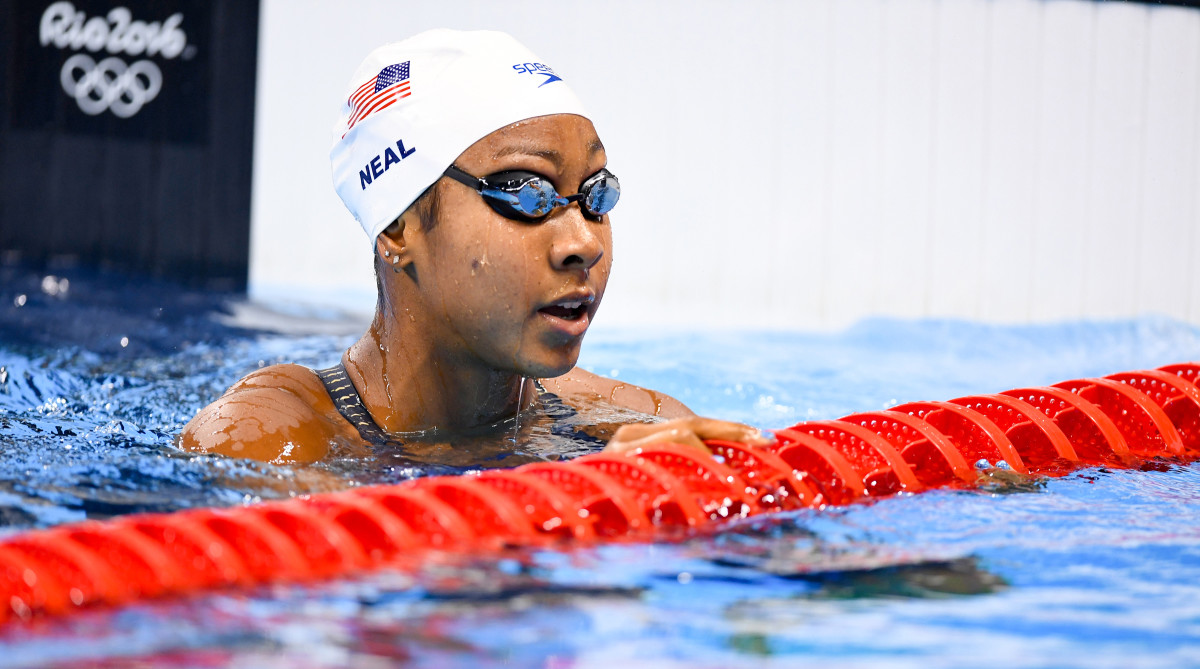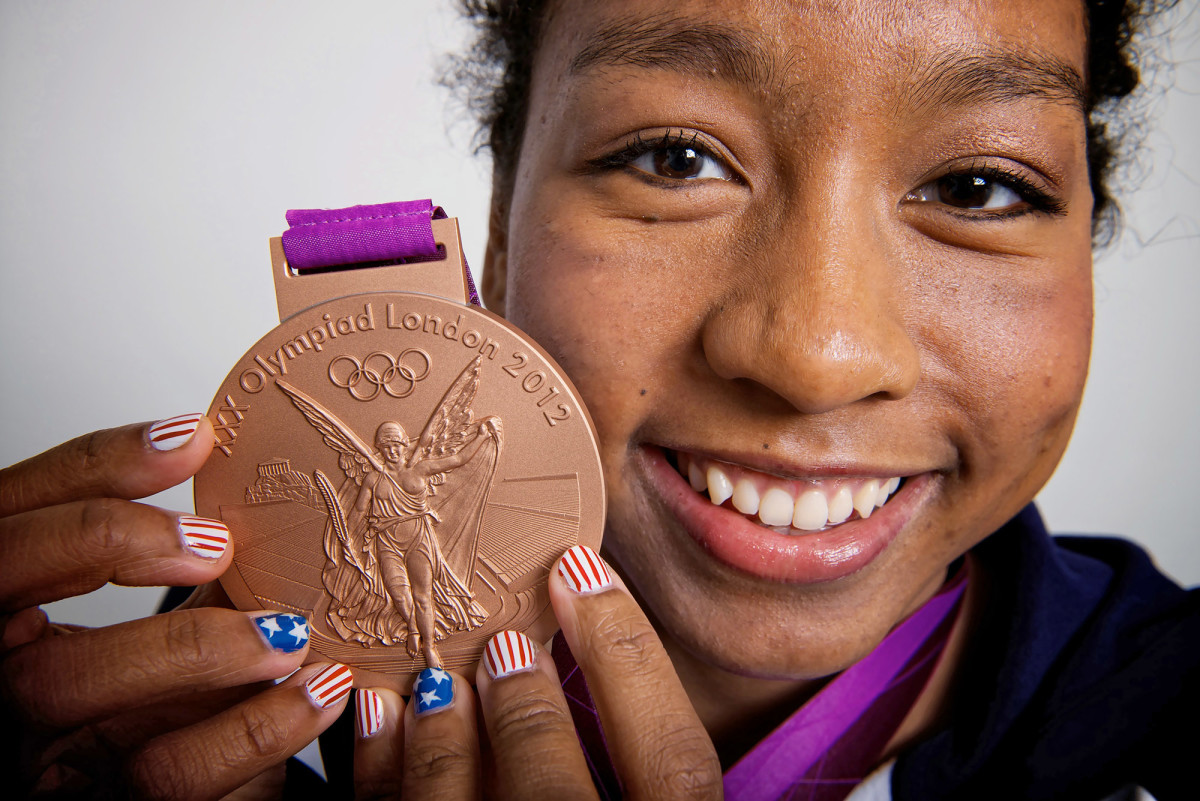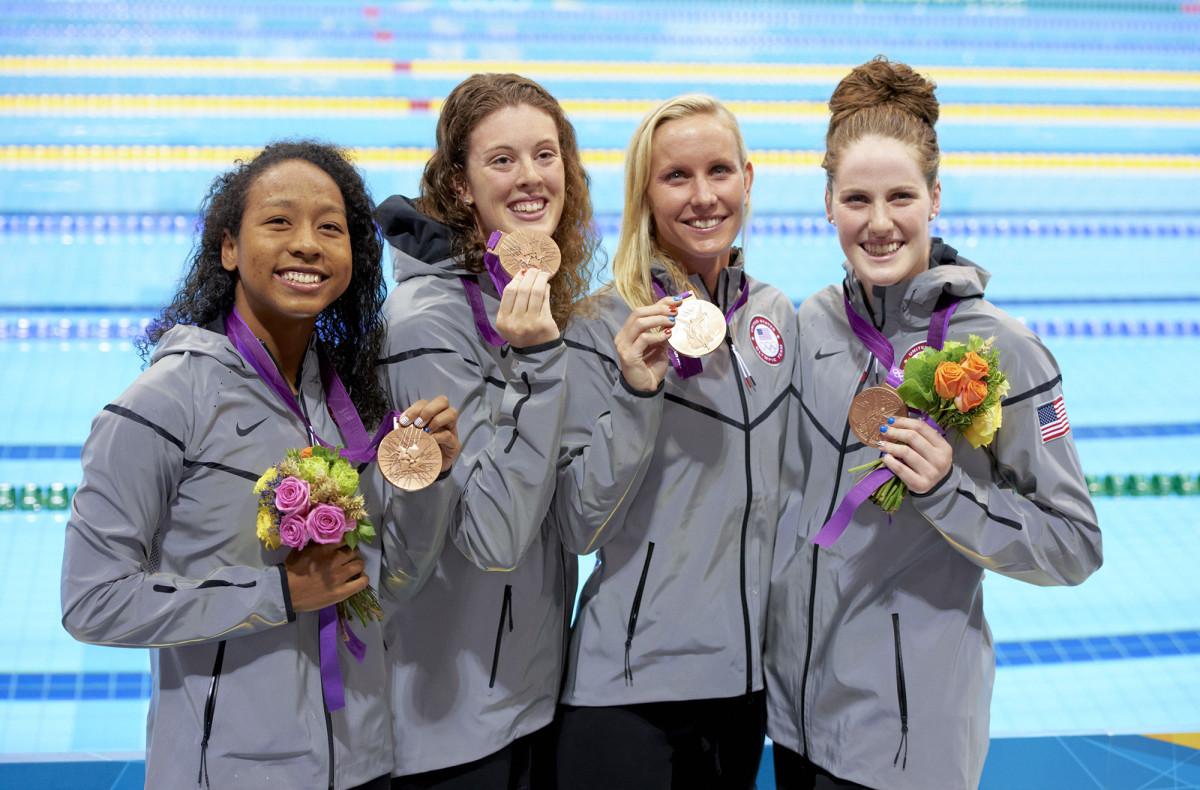Be the Representation You Want to See


In honor of Black History Month, Sports Illustrated is passing the pen to prominent Black voices across sports to reflect, re-examine legacies and share their stories and viewpoints on what lies ahead for the next generation of trailblazers.
I started swimming at 6 years old, taking lessons because my friends in the first grade were as well. Their parents urged my mom to have me join them, so I did lessons for two years before starting to swim competitively and signed up for a team at 8. I was lucky to be born and raised in New York; my club team was—and to this day is—probably one of the most diverse teams that I've ever seen, so race was never really on the top of my mind.
I'm lucky to have had that part shielded from me—not in a naive way, because I still was around a lot of different cultures in swimming—but it allowed me to just focus on being an athlete, just focus on the sport itself without having the extra burden of thinking of all the prejudice.
But in 2012, after making my first Olympics and getting more press, questions about race began coming up, which made me realize how predominantly white swimming is.

When I first started in the sport, I wasn't looking to be an Olympian or a role model. I was just getting into it because it was fun at the time. I slowly began working up the ranks within swimming and that eventually led me to the Olympic level. When I started to get questions about my identity, that was when I really started to seriously think about the body that I was born into.
At the beginning of my career, I was just worried about going fast or getting the best time, but I quickly learned that becoming a role model and being that person for others to look up to was a role that I inevitably had to take on. And it became a role that I was appreciative of. I'm so glad that when I started swimming at bigger meets, winning two Olympic medals and becoming the first Black woman to swim in multiple Olympics, I could be that representation for other kids who looked like me. It’s still special to realize I can have that impact.
There are so many different angles to tackle the diversity issue within swimming. First, many foundations exist and are all asking for grants so that they can provide swim lessons to teach kids in predominantly Black communities to be safe in the water. That's just the bare minimum—making sure that people are not drowning. They’re saving lives. But then there's a whole other component where we're trying to increase diversity on the national-team level.

To do that, we must get minority kids excited to swim. There needs to be more swimming and Black swimmers featured on TV. That's where the representation component comes in. You see someone who looks like you, and you become inspired, so it makes it that much more feasible for you to believe in yourself.
Access is a major component as well. I haven't really swum since retiring because pools are not the most convenient. Of my friends that do swim, they have Equinox memberships—not too affordable. And then just a lack of pools depending on where you are. I'm in New York and even though I grew up swimming in Manhattan, I wouldn't do that today because it is so out of the way for me. I'm surprised that my mom and I did that my whole life.
There are quite a few issues to address, and there are different people chipping away at it from different angles, so we're making some progress. But it's a lot of time and oppression to make up for. That's why it's not happening as quickly as we would probably like.
It’s important that we bring these issues to the forefront of the conversation. In summer 2020, there was such a magnifying glass on social injustice and police brutality. I was still swimming at the time, and I saw the lack of response from the swimming community. I felt compelled to do something about it. I knew that if we just didn't bring any attention to it, other people were just going to assume that USA Swimming was apathetic to it, or at least the swimmers, which wasn't the case. That's why my friend and teammate Jacob Pebley and I started Swimmers For Change—a webinar series to raise awareness for what was going on and just to let people know that we swimmers do feel some type of way about it and want to make sure that—especially in such a predominantly white sport—the few minority swimmers in the country felt seen and heard and didn’t feel so alone.
It went beyond my expectations, just seeing how deeply all my friends, these Olympians and the national team athletes cared about the cause and how emotionally tied they felt to it.
In recent months, there’s been a pivot in Swimmers For Change. It started as a response to what was going on with the social justice movement, but now going forward, I want to use it as a way to provide accessibility and resources and open the doors that swimming has opened for me with scholarships and grants. That's the future of Swimmers For Change. We are in the process of filing it as a nonprofit 501(c)(3) so that we can get those grants underway and be able to help other student-athletes.
Swimming is a sport that comes with a lot of barriers. It takes a lot of time, financial support, access and people supporting these athletes to finally get to the Olympic level. I know I had all of that, which is how I was able to accomplish what I did—through scholarships and family and friends supporting me. My goal is to be able to do the same for others.
